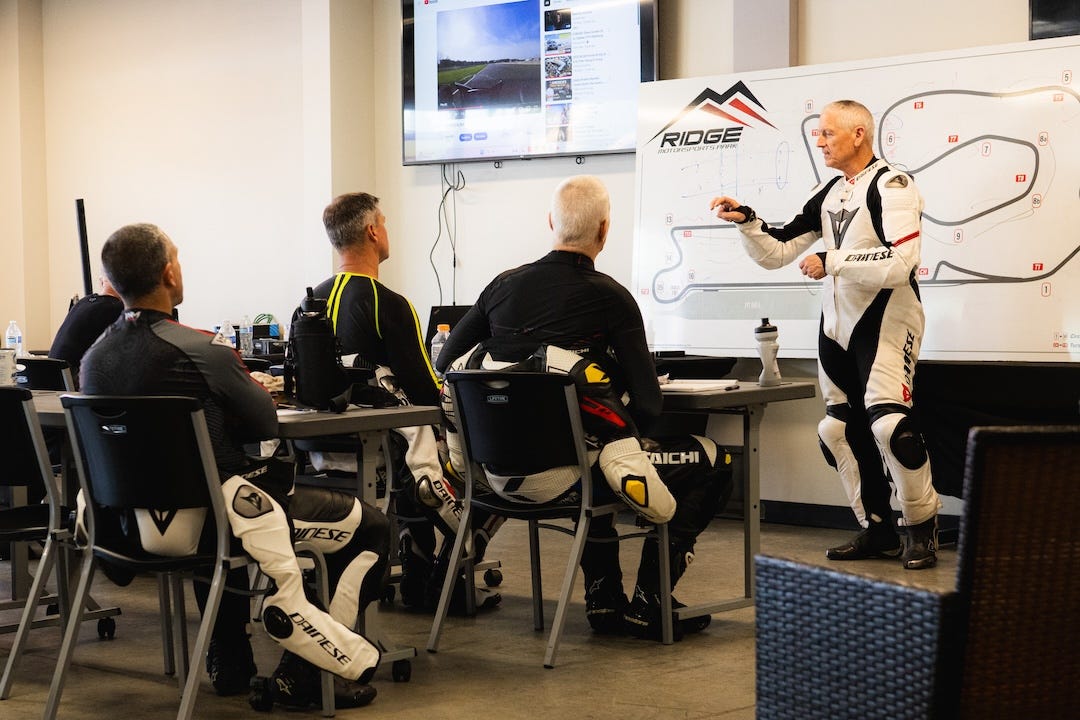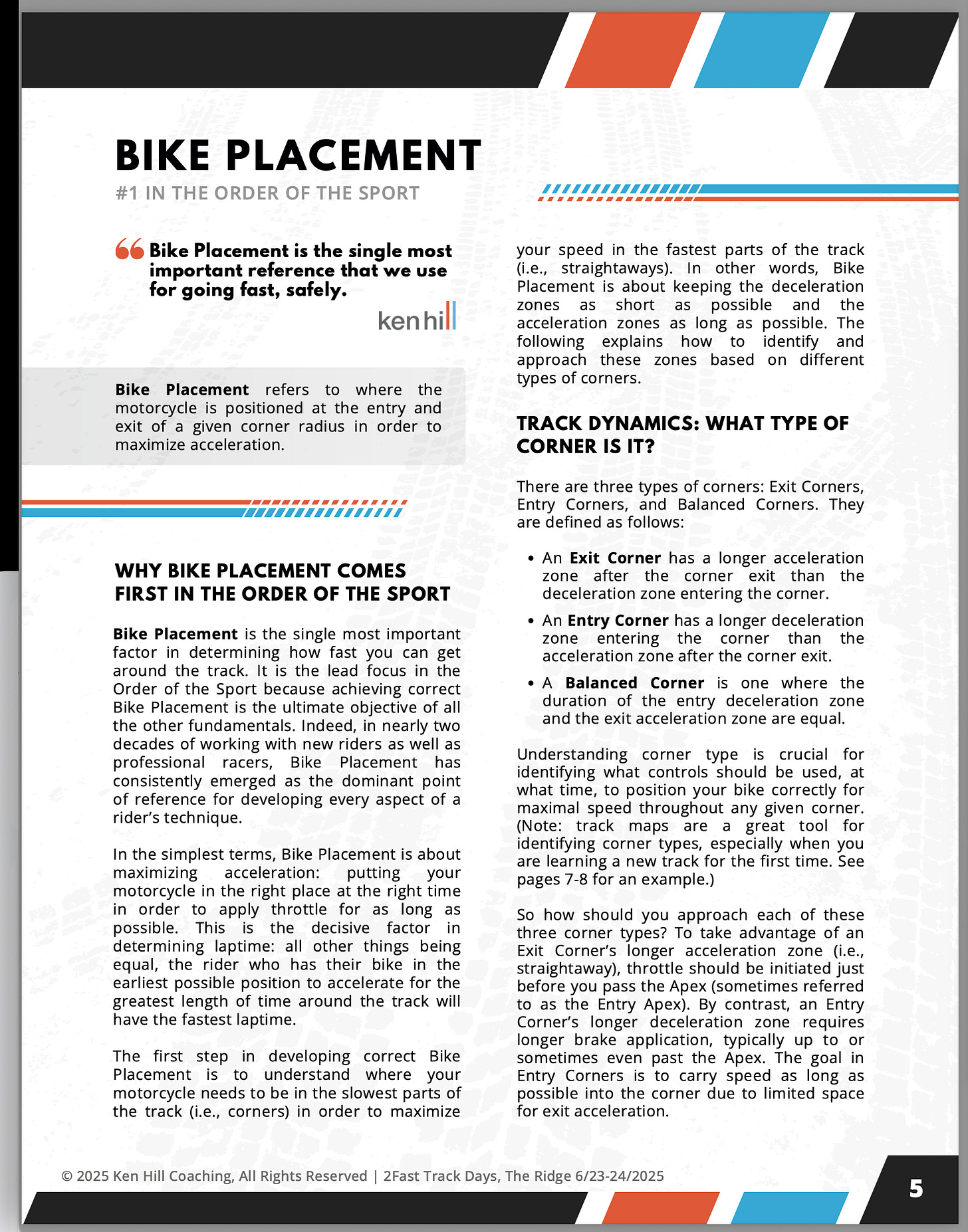[THE DEBRIEF] DO YOUR NEXT STEPS COME FROM WELL-MEANING ADVICE OR TECHNIQUES GROUNDED IN FUNDAMENTALS?
Understanding the difference, and why methodology matters
If you go to an amateur race weekend or a track day and ask to work with a coach, chances are, the first comment you’ll hear is, “Let’s work on your lines.” Stick around and you’ll probably hear other catchphrases like, “Look through the corner” or “Get your body over more.”
While there is definitely value to those directives, they aren’t techniques; they’re advice. Real methodology goes deeper—much deeper. It’s structured, complete, and should contain the following:
Define what you’re working on and why it matters
Create measurable objectives, with corresponding drills
Confirm progress in real time, followed by evaluation with data, video, or coach feedback

Proper methodology is built on the same fundamentals used by the best racers in the world. These aren’t random tips; they’re proven techniques that let them run record pace, lap after lap, while mitigating risk. Each one builds on the next, creating a loop of continual improvement. The best don’t just push harder and hope for success. Every action is deliberate, with a specific plan for every inch of the racetrack.
How do I know this works? Decades of classroom and track time, tens of thousands of laps with students, and daily debriefs with my instructors—constant evaluations predicated on both subjective feel and objective data. The results speak for themselves: Not only do lap times improve, but understanding, precision, and safety go through the roof. Students have a clear path forward.
Let’s look at some of the common catchphrases, and how I’ve unpacked them through years of riding, coaching, and analysis to create clear, actionable methodology:
Lines = vehicle placement
Eyes up, look ahead = vision and focus
Smooth equals fast = motor controls
Trailbraking = brake adjustability
Turn faster = turn-in point and turn-in rate
Body position = body position and body timing
I call this “the order of the sport,” and it isn’t about quick fixes. It’s about understanding what’s really holding you back and finding a solution. Each piece connects to the next, pointing you toward progress. So, the next time you hear, “Your line in Turn 6 needs work,” don’t just nod. Ask why, what it’s costing you, how to fix it, and how fixing it will move you forward.
About Ken Hill
Ken Hill is considered the top motorcycle riding coach in the U.S. He bought his first motorcycle at age 30 and began road racing the very same year. Despite the late start, Ken went on to set track records and win class championships before making his professional debut in the AMA Superbike class, where he finished in the top 10 at age 41. Ken’s passion for learning and, ultimately, bettering the sport, led him to retire from racing in 2007 and devote himself full-time to coaching. Learn more at khcoaching.com.


